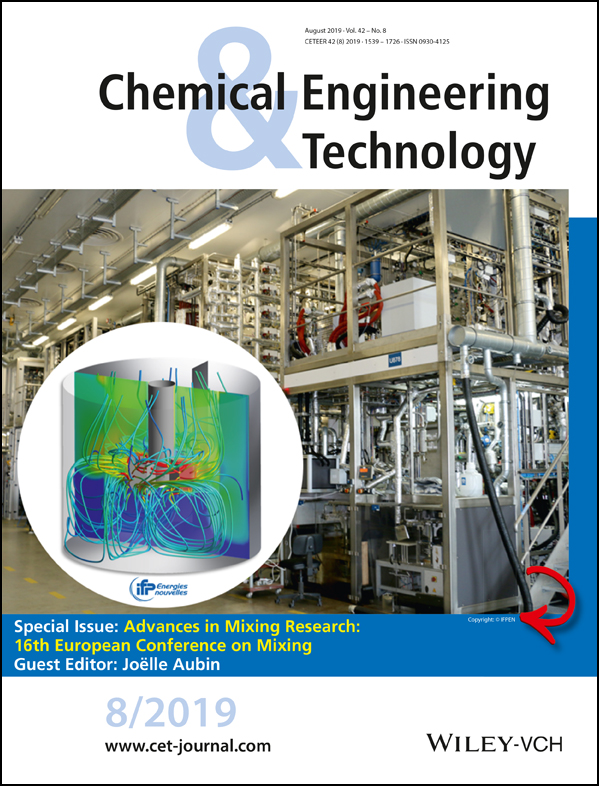Simulation of Mixing in Structured Fluids with Dissipative Particle Dynamics and Validation with Experimental Data
Abstract
Structured fluids are simulated with dissipative particle dynamics and the predictions are validated with experimental data. The structured fluid considered is a mixture of the triblock copolymer Pluronic P103 and water. This attempt follows a first investigation with the same model parameters of a mixture with another Pluronic, L64, and water. Dissipative particle dynamics simulations are applied to identify, via a clustering algorithm, the different microstructures observed at different temperatures and compositions. This algorithm is also employed to determine the cluster mass distributions and to calculate the resulting chemical potentials associated with the different microstructures. The chemical potentials are in turn used to extract the critical micellar concentration and important shape factors. Comparison of model predictions with experimental data from the literature indicates decent agreement.




